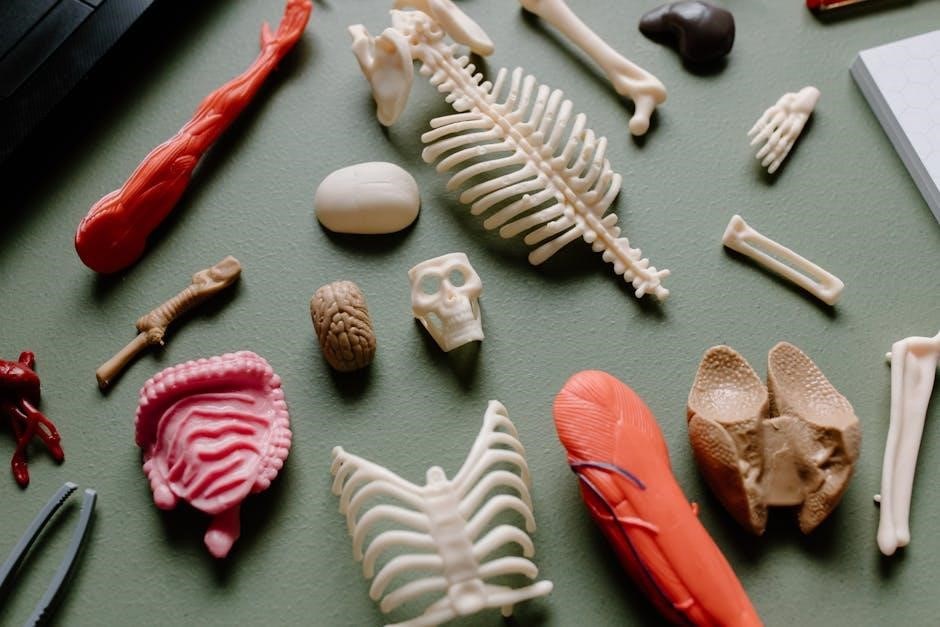The CAGED System is a powerful guitar technique using C, A, G, E, D chord shapes to map the fretboard, enhancing navigation and understanding through interconnected chord forms.
What is the CAGED System?
The CAGED System is a guitar playing method that uses five basic open chord shapes—C, A, G, E, and D—to map the fretboard. These shapes are interconnected, allowing guitarists to understand how chords, scales, and arpeggios relate across the neck. By visualizing these chord forms in different positions, players can navigate the fretboard more effectively and find chord tones easily. It’s not just about chords; it’s a system for understanding the guitar’s layout, making it easier to improvise, solo, and play in various keys. The CAGED System bridges the gap between chords and scales, providing a structured approach to learning and applying musical concepts.
Importance of the CAGED System for Guitarists
The CAGED System is essential for guitarists as it simplifies fretboard navigation, enhancing musical understanding. By connecting C, A, G, E, and D chord shapes, it provides a framework for identifying chord tones, scales, and arpeggios across the neck. This system is particularly beneficial for improvisation and soloing, as it allows guitarists to move seamlessly between keys. It also deepens knowledge of chord and scale relationships, making it easier to play with precision and emotion. The CAGED System is a versatile tool that transforms the guitar from a confusing instrument into a logical, accessible one, empowering musicians to express themselves more effectively and creatively.

Origins and Background
The CAGED System originated from mapping the fretboard using five basic chord shapes: C, A, G, E, and D. It provides a logical framework for understanding chord forms and their connections across the neck, aiding in improvisation, soloing, and musical expression. This system is widely used to simplify complex guitar concepts, making it accessible for musicians to navigate and play with precision and creativity.
History and Development of the CAGED System
The CAGED System emerged as a method to simplify guitar fretboard navigation by linking basic open chords (C, A, G, E, D) into a unified framework. Its development stems from the observation that these chord shapes can be transposed up the neck, creating a logical system for understanding chord forms and their relationships. Over time, guitarists refined this approach to enhance soloing, improvisation, and scale knowledge. The system gained prominence as a tool for visualizing the fretboard and connecting musical concepts, evolving into a comprehensive method for mastering chord and scale patterns across all keys. Its evolution underscores its versatility as a foundational learning tool.
Key Concepts: Chords vs. Chord Shapes
The CAGED System relies on distinguishing between chords and chord shapes. A chord is defined by its musical notes, such as C (C-E-G), while a chord shape refers to the physical pattern pressed on the guitar strings. For example, a C chord has a specific shape that can be moved up the fretboard to form other chords like D or E. This distinction is crucial as the CAGED System uses these shapes to map out chords and scales across the fretboard, enabling guitarists to visualize and play music more effectively. Understanding this relationship is the foundation of mastering the system and its practical applications. This clarity helps in navigating the fretboard seamlessly.
Breakdown of the Five Basic Chord Shapes
The CAGED System revolves around five foundational chord shapes: C, A, G, E, D. These shapes, derived from open chords, are interchangeable and form the basis of fretboard navigation.
C Chord Shape
The C chord shape is the first in the CAGED System, serving as a foundational form for building other chords. Its root note is on the A string, and when moved up the fretboard, it transitions into an A chord shape. This shape is essential for understanding how chords connect across the neck. By recognizing the C shape, guitarists can easily locate chord tones and scales, making it a versatile tool for both rhythm and lead playing. Mastery of the C shape simplifies navigating the fretboard and unlocks the system’s full potential for improvisation and composition.
A Chord Shape
The A chord shape is the second form in the CAGED System, with its root note located on the A string. When moved up the fretboard, this shape seamlessly transitions into a D chord, demonstrating the system’s interconnected nature. The A shape is crucial for understanding chord relationships and navigating the fretboard efficiently. Guitarists can use this shape to build various chords and scales by recognizing its structure across different positions. Mastery of the A shape enhances versatility in both rhythm playing and soloing, making it a fundamental element of the CAGED System for achieving fluid fretboard navigation and musical expression.
G Chord Shape
The G chord shape is a cornerstone of the CAGED System, with its root note located on both the G and E strings. This shape is vital for building chords and scales across the fretboard. By moving the G shape up the neck, guitarists can access various chords like Em or C, showcasing the system’s connectivity. The G shape is particularly useful for soloing and improvisation, as it aligns with major and minor scales. Understanding this shape enhances fretboard navigation and chord transitions. It’s a key element for mastering the CAGED System, providing a foundation for advanced techniques and musical expression across multiple genres.
E Chord Shape
The E chord shape is a fundamental component of the CAGED System, with its root note located on the E string. This shape is essential for constructing chords and scales across the fretboard. The E shape is simple yet versatile, often used to form barre chords by adding a finger across the fret. When moved up the neck, it connects seamlessly with other CAGED shapes, allowing for smooth transitions between chords and scales. This shape is particularly useful for creating powerful, full-sounding chords and is a cornerstone for soloing and improvisation. Mastering the E shape enhances your ability to navigate the fretboard and play with precision and confidence across various musical genres.
D Chord Shape
The D chord shape is a key element in the CAGED System, known for its versatility and rich tonal quality. Rooted on the D string, this shape is instrumental in creating both open and barre chords. The D shape is often used to build complex chord voicings and is a favorite for rhythm playing. When moved up the fretboard, it seamlessly connects with other CAGED shapes, allowing for fluid transitions between chords and scales. This shape is especially useful for creating dynamic, full-bodied sounds and is a cornerstone for both rhythm and lead playing across multiple genres. Mastering the D shape unlocks new possibilities for expressive and versatile guitar playing.

Connecting Chord Shapes Across the Fretboard
The CAGED System excels at linking chord shapes smoothly across the fretboard, allowing guitarists to visualize and play chords seamlessly in any key, enhancing both rhythm and lead playing.
Mapping the Fretboard with CAGED
The CAGED System provides a structured approach to mapping the fretboard by visualizing chord shapes across the neck. By recognizing the C, A, G, E, and D shapes, guitarists can connect chords seamlessly in any key, enabling efficient navigation. This method highlights how chord tones repeat across strings, allowing players to identify chord locations intuitively. It also reveals how scales and arpeggios align with these shapes, creating a unified framework for understanding the fretboard. Mapping with CAGED simplifies finding chord tones, transitions, and scale patterns, making it an invaluable tool for both rhythm and lead playing across all musical genres and styles.

Benefits of the CAGED System
The CAGED System enhances fretboard navigation, simplifies chord and scale understanding, and improves improvisation skills, making it a versatile tool for guitarists to master various musical styles efficiently.
Enhanced Fretboard Navigation
The CAGED System significantly improves fretboard navigation by using five basic chord shapes to map out the entire neck. Guitarists can visualize chord tones across the fretboard, eliminating the need to memorize every note individually. By understanding how these shapes connect, players can move seamlessly between chords and scales, reducing confusion. This method also helps identify octaves and chord tones, making it easier to build chords or scales starting from any string. The system streamlines fretboard knowledge, enabling guitarists to play with greater precision and confidence. It transforms the fretboard into a logical, interconnected map, enhancing overall guitar playing efficiency and creativity.
Improved Chord and Scale Knowledge
The CAGED System enhances chord and scale understanding by revealing how chords and scales are interconnected. Each chord shape corresponds to a scale pattern, allowing guitarists to identify notes within chords and scales more effectively. This method helps players recognize chord tones across the fretboard, making it easier to build chords and scales from any root note. By visualizing these connections, guitarists can expand their harmonic knowledge and apply it practically. The system also aids in learning chord inversions and extensions, providing a deeper understanding of music theory. This integration of chords and scales fosters a more comprehensive approach to guitar playing and composition.

Drawbacks and Limitations
The CAGED System can be challenging for beginners, requiring significant memorization. It may hinder emotional expression and spontaneity in playing, as it focuses on structured patterns rather than intuition.
Potential Challenges for Beginners
Beginners often find the CAGED System overwhelming due to its complexity. Memorizing five chord shapes and their connections across the fretboard can be daunting. The need to constantly shift shapes and understand their relationships may lead to frustration. Additionally, the system requires a solid understanding of chord theory and fretboard navigation, which can be challenging for those new to guitar. The reliance on structured patterns might also limit spontaneous playing, making it harder for beginners to express emotion naturally. However, with consistent practice and a step-by-step approach, these challenges can be overcome, helping learners build a strong foundation for advanced techniques.

Practical Applications
The CAGED System is versatile for soloing, improvisation, and playing chord tones across various music genres, making it a practical tool for enhancing guitar performance and creativity.
Using CAGED for Soloing and Improvisation
The CAGED System is a invaluable tool for soloing and improvisation, enabling guitarists to visually connect chord shapes and scales across the fretboard. By recognizing chord forms like C, A, G, E, and D, musicians can seamlessly transition between chords and scales, creating fluid, coherent solos. This method allows for efficient navigation of the fretboard, making it easier to locate chord tones and scale degrees in any key. The system emphasizes understanding how chords and scales interrelate, providing a structured approach to improvisation. This ability to visualize and connect shapes enhances creativity and spontaneity, making the CAGED System a vital skill for any improvising guitarist.
Applying CAGED to Various Music Genres
The CAGED System is a versatile tool applicable across multiple music genres, enhancing guitarists’ ability to navigate the fretboard seamlessly. In rock music, it facilitates quick movement of power chords and identifies chord tones for solos. Jazz benefits from its ability to locate extended chords and complex scales, aiding improvisation. Blues musicians can use it to map pentatonic and blues scales, targeting key notes for soulful playing. Country guitarists can find twangy notes and move smoothly between chords. While less directly applicable to classical guitar, it still aids in understanding harmony. Folk musicians can enhance chord variations and fingerpicking patterns. Metal shredders benefit from rapid navigation and scale location. Ultimately, the CAGED System’s visual framework supports diverse musical styles, fostering creativity and technical precision.

Resources for Further Learning
Explore recommended PDF guides and tutorials for in-depth lessons on mastering the CAGED System, offering step-by-step instruction and practical assignments to enhance your guitar skills effectively.
Recommended PDF Guides and Tutorials
For a deeper understanding, explore PDF guides that break down the CAGED System into clear, step-by-step lessons. These resources often include visual diagrams, exercises, and practical assignments to help guitarists master the system. Many guides focus on connecting chord shapes with scales and arpeggios, making it easier to apply the CAGED method in real-world playing scenarios. Tutorials frequently emphasize the importance of memorization and experimentation, encouraging players to explore improvisation and genre-specific applications. Whether you’re a beginner or an intermediate player, these PDF resources provide structured learning paths to enhance your fretboard navigation and musical versatility. They are essential tools for unlocking the full potential of the CAGED System.